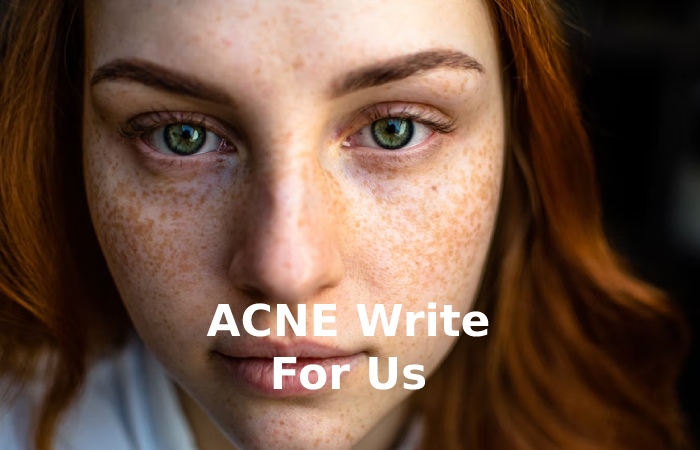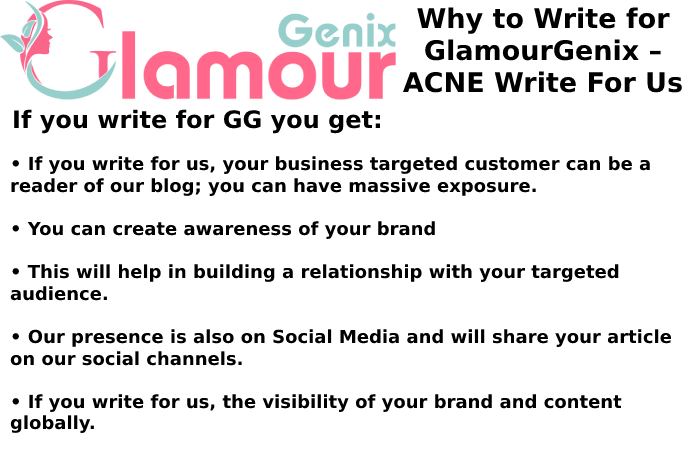ACNE Write For Us

Acne is known for a common skin illness that happens when hair follicles develop blocked by oil and dead skin lockups, leading to the development of pimples, blackheads, whiteheads, or cysts. It typically affects areas of the skin with a high concentration of oil glands, such as the face, neck, chest, shoulders, and back.
Acne can be triggered by many factors, with hormonal fluctuations, inheritances, extra oil making, bacteria, irritation, and certain medications or skincare products. Factors like puberty, menses, pregnancy, stress, and diet can make worse acne symptoms.
Treatment for acne might contain up-to-date medicines like retinoids, benzoyl peroxide, or salicylic acid, oral medications like antibiotics or isotretinoin, and measures like chemical peels, laser therapy, or removal of comedones. Effective acne management also includes correct skincare practices, with gentle cleansing, moisturizing, and sun protection, as well as avoiding triggers and maintaining a healthy lifestyle.
How to Submit Your Article?
To submit your article at glamourgenix.com, you can send an email or pitch us at contact@glamourgenix.com.
Why Write for GlamourGenix – ACNE Write For Us
Search Terms Related to Acne
- skin condition
- dead skin cells
- oil from the skin
- pimples
- scarring
- oil glands
- anxiety
- self-esteem
- depression
- thoughts
- suicide
- medical condition
- integumentary system
- organ system
- nails
Search Terms for Acne
- Acne Write For Us
- Acne Guest Post
- Acne Submit Post
- Acne Contribute Post
- Submit An Article Acne
- Acne Write For Us
- Acne Guest Post
- Acne Submit Post
- Acne Contribute Post
- Acne Suggest A Post
- Acne + Write For Us
- Acne + Guest Post
- Acne + Submit Post
- Acne + Contribute Post
- Acne Guest Author
- Write For Us + Acne
- Guest Post + Acne
- Submit Post + Acne
- Contribute Post + Acne
- Writers Wanted cystic acne
- Write For Us upper body
- Guest Post neck
- Submit Post arms
- Contribute Post Face
- Become A Guest Blogger Body
Guidelines of the Article on Glamor Genix – Acne
- Glamor Genix welcomes fresh and unique content related to Acne.
- Glamor Genix allows at least 500+ words related to Acne.
- The editorial team of Glamor Genix does not inspire promotional content related to Acne
- For publishing an article at Glamor Genix, please e-mail us at contact@glamorgenix.com
- Glamourgenix allows articles related to beauty and fashion, skin, fitness, lifestyle, make-up, products and many more

